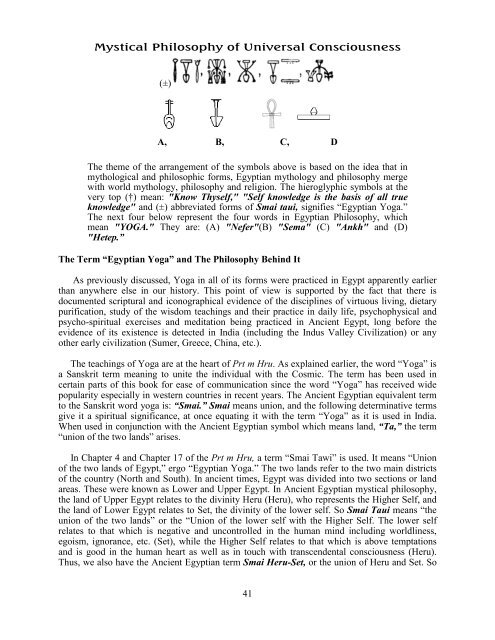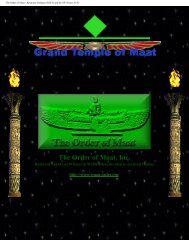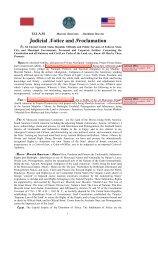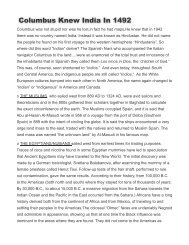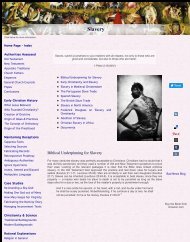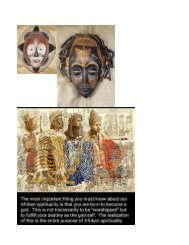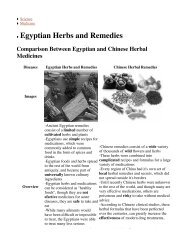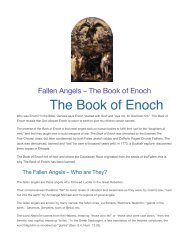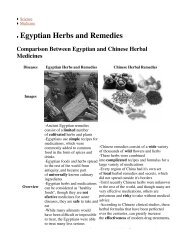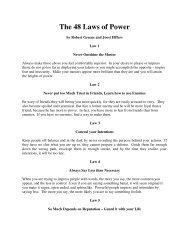scared-sexuality
You also want an ePaper? Increase the reach of your titles
YUMPU automatically turns print PDFs into web optimized ePapers that Google loves.
Mystical Philosophy of Universal Consciousness<br />
(±)<br />
A, B, C, D<br />
The theme of the arrangement of the symbols above is based on the idea that in<br />
mythological and philosophic forms, Egyptian mythology and philosophy merge<br />
with world mythology, philosophy and religion. The hieroglyphic symbols at the<br />
very top (†) mean: "Know Thyself," "Self knowledge is the basis of all true<br />
knowledge" and (±) abbreviated forms of Smai taui, signifies “Egyptian Yoga.”<br />
The next four below represent the four words in Egyptian Philosophy, which<br />
mean "YOGA." They are: (A) "Nefer"(B) "Sema" (C) "Ankh" and (D)<br />
"Hetep.”<br />
The Term “Egyptian Yoga” and The Philosophy Behind It<br />
As previously discussed, Yoga in all of its forms were practiced in Egypt apparently earlier<br />
than anywhere else in our history. This point of view is supported by the fact that there is<br />
documented scriptural and iconographical evidence of the disciplines of virtuous living, dietary<br />
purification, study of the wisdom teachings and their practice in daily life, psychophysical and<br />
psycho-spiritual exercises and meditation being practiced in Ancient Egypt, long before the<br />
evidence of its existence is detected in India (including the Indus Valley Civilization) or any<br />
other early civilization (Sumer, Greece, China, etc.).<br />
The teachings of Yoga are at the heart of Prt m Hru. As explained earlier, the word “Yoga” is<br />
a Sanskrit term meaning to unite the individual with the Cosmic. The term has been used in<br />
certain parts of this book for ease of communication since the word “Yoga” has received wide<br />
popularity especially in western countries in recent years. The Ancient Egyptian equivalent term<br />
to the Sanskrit word yoga is: “Smai.” Smai means union, and the following determinative terms<br />
give it a spiritual significance, at once equating it with the term “Yoga” as it is used in India.<br />
When used in conjunction with the Ancient Egyptian symbol which means land, “Ta,” the term<br />
“union of the two lands” arises.<br />
In Chapter 4 and Chapter 17 of the Prt m Hru, a term “Smai Tawi” is used. It means “Union<br />
of the two lands of Egypt,” ergo “Egyptian Yoga.” The two lands refer to the two main districts<br />
of the country (North and South). In ancient times, Egypt was divided into two sections or land<br />
areas. These were known as Lower and Upper Egypt. In Ancient Egyptian mystical philosophy,<br />
the land of Upper Egypt relates to the divinity Heru (Heru), who represents the Higher Self, and<br />
the land of Lower Egypt relates to Set, the divinity of the lower self. So Smai Taui means “the<br />
union of the two lands” or the “Union of the lower self with the Higher Self. The lower self<br />
relates to that which is negative and uncontrolled in the human mind including worldliness,<br />
egoism, ignorance, etc. (Set), while the Higher Self relates to that which is above temptations<br />
and is good in the human heart as well as in touch with transcendental consciousness (Heru).<br />
Thus, we also have the Ancient Egyptian term Smai Heru-Set, or the union of Heru and Set. So<br />
41


